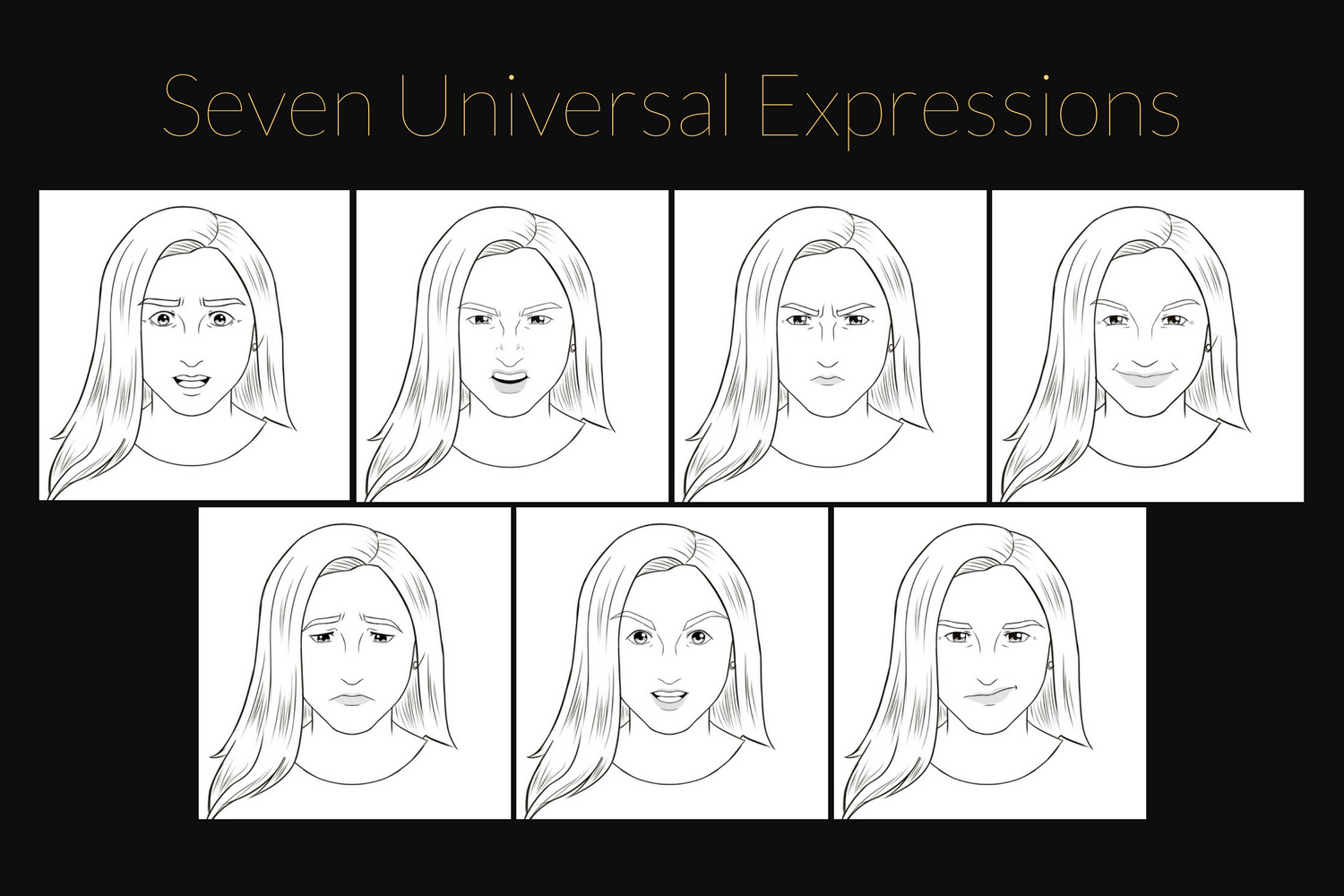
COMMUNICATION, BEHAVIOUR & ART
Body Language & Communication Blog
Ranked in the top 4 body language blogs on the web since 2020.
Our work is based on scientific theories relating to nonverbal behaviour and statement analysis, yet remains the opinion of the author.
Social Anxiety: How to create positive perceptions
I don’t want to increase anybody’s anxiety, but a recent study found that people with high levels of anxiety were rated less positively by conversation partners. To add insult to injury, conversation partners have a reduced desire for future interactions with people with social anxiety disorder. Before you slump into defeat, let’s get to the bottom of this, then look at some practical solutions.
The Single Thing Crucial for Job Interview Success
At your next job interview, important interaction or when meeting people the first time, leverage from this innate characteristic, that's universal across all people, regardless of culture. When you switch your thinking and use this characteristic as an opportunity, you can disproportionally sway the perception of the interviewers. They will view you more positively, increasing your chance for job interview success. Hone your interview skills with our Perth events–Interview with Impact for Job Interview Success.
One Simple Solution to Reduce Stress and Anxiety in Minutes
Learn what happens in the brain and body as you feel stress and anxiety, the emotions behind stress, and a simple technique to prevent or reduce the body’s response to stress. In this post there are three versions of a follow-along slow breathing exercise, which slows the heart rate and reins in other autonomic processes, so you can regain control and tackle life’s challenges.
LifeStyle: The Body Language Guide to Flirting
Want to know the body language secrets of love and dating? Find out if he, or she, likes you and what you can do to say, “Hey, I’m interested”. Check out our top Flirting Behaviours–what to do and why are they important.
Oxytocin and the Power of Touch in Building Connection
What is oxytocin, how does it influence behaviour and why is it important in building connection. Learn how to build connection, trust, caring and empathy by appropriate social touch–socially and professionally. And how to increase your oxytocin levels for wellbeing, from hugs and pet therapy.
First Impressions: Your split second opportunity for success
In this post, we focus on first impressions–how important are they and why? And how this relates to you and your personal presentation. We touch on two related concepts, confirmation bias and impression updating.
Video Interview: Universal facial expressions of emotion
Courtney Waller interviews Sophie Zadeh about her TED-Ed lesson: Are there universal expressions? They discuss the history of emotion, display rules, animal and human expression, botox on expressions, how to trigger emotions, macroexpressions and microexpressions.
WA School of Mines Alumni Podcast–Body Language
I was interviewed by Kyle De Souza for the Western Australia School of Mines Alumni podcast. In this episode, we talk about body language...
WA School of Mines Alumni Podcast–Seeking Truth and Concord
I was interviewed by Kyle De Souza for the Western Australia School of Mines (WASM) Alumni podcast. In this episode, we chat about deception...
Emotion Spotting: Expressions and microexpressions
Are you missing an important channel of communication?
Most of us listen to spoken words as we interact with others, but not many people pay conscious attention to what remains unspoken. Words can, and do, convey lots of complex thoughts, theories and feelings, but they are usually filtered and adapted to create a certain impression, giving you, the listener, the 'intended' message. There are lots of reasons for this– to be more amicable, to maintain relationships, to deceive, to conceal emotions, to make others feel better– to name a few. So it's not all bad. Imagine if everybody spoke their thoughts– Ouch! In many situations, however, you could benefit from knowing more and having a good understanding of how the person you interact with really feels, whether it's potential deception in a negotiation or marriage, or when you just want a family member to be more open with you.
What are universal expressions?
Scientists have found that the muscles in our face can produce 30 independent movements– 12 in the upper face, and 18 in the lower face. Working together in various combinations, these muscle movements are capable of creating thousands of expressions. However, most scientists agree that out of all of these expressions, only seven are 'universal'– innate within all of us, regardless of culture. They are...
Why you felt awkward as Professor Kelly's children interrupted his BBC interview.
You probably felt awkward when you saw South Korea expert, Professor Kelly's reaction as he was interrupted by his children during his BBC interview. But do you know why you felt his discomfort? Find out which nonverbal behaviour repeated nine times, to make you feel his pain.
What happens in the body when we feel an emotion?
When we experience emotions we feel physical sensations within our body. Have you ever stopped in the moment of an emotion, to evaluate what you are feeling? And where that feeling is? In an emotion, our brain triggers physiological changes within our body. These changes alter our autonomic processes (processes we don't consciously control), such as heart rate, breathing, sweating and blink rate. In turn these physiological changes create physical feelings, or sensations, within our body. We associate these physical feelings with the emotion. Researchers at Aalto University have created visual bodily maps of emotions, based on self reported bodily sensations, experienced when an emotion was triggered. The results were gathered from 701 participants from around the world.
Nonverbal Communication: The heart of emotional intelligence
Nonverbal communication plays a large part in emotional intelligence. The most obvious link is in understanding the true feelings of others, based on their nonverbal communication cues; a topic I write about a lot. If you can read these cues, you have the ability to understand their emotions and can therefore adapt and respond appropriately. The latter part of the equation (your response) being the most significant.
Less obvious is that understanding, and awareness, of nonverbal cues can also help you to understand yourself! When I notice myself doing certain cues (many are involuntary), I pause and re-evaluate my own emotions, or what I just said. For example if I notice myself doing a one-sided shoulder shrug, or nod, as I say, "I don't care what they think", I can then re-evaluate my thoughts and conclude that I'm kidding myself. Of course I care, why wouldn't I?
Australian Security Magazine: Deception detection uncovered
Part two, The Role of your Body in Eliciting Truth, of my article Deception Detection Uncovered; Truth Seeking Through Interrogation, is out now in Australian Security Magazine.
Part one, Identifying Nonverbal Cues, Clues to Dig Deeper, looked at several nonverbal cues that, when seen, alert us to a potential issue; an area in which we should dig deeper in our quest to discover the truth or true feelings. Part two, The Role of your Body in Eliciting Truth, explores the other side of the equation; how you can use your own body language, gesture and expression to facilitate truth seeking.
Keynote speaker, Charlie Caruso, flutters her eyelids, yet nobody bats an eyelid.
While analysing the footage, I noticed a very interesting nonverbal signal from Charlie. As she was being introduced to the audience, and in response to the host's remarks, Charlie did an eyelid flutter. While this may sound trivial, observing an eyelid flutter can be very telling, as to how somebody is feeling about a topic. For people in business, especially those of you that lead, pitch or negotiate, the ability to read such nonverbal cues, can elevate your success to the next level. Cues like this are involuntary and indicate some kind of concern in response to a stimulus, in this case, the host's words. The nonverbal response, immediately follows the stimulus. Reading these cues gives the observer the ability to detect an issue and, more importantly, respond appropriately by working to resolve the issue.















